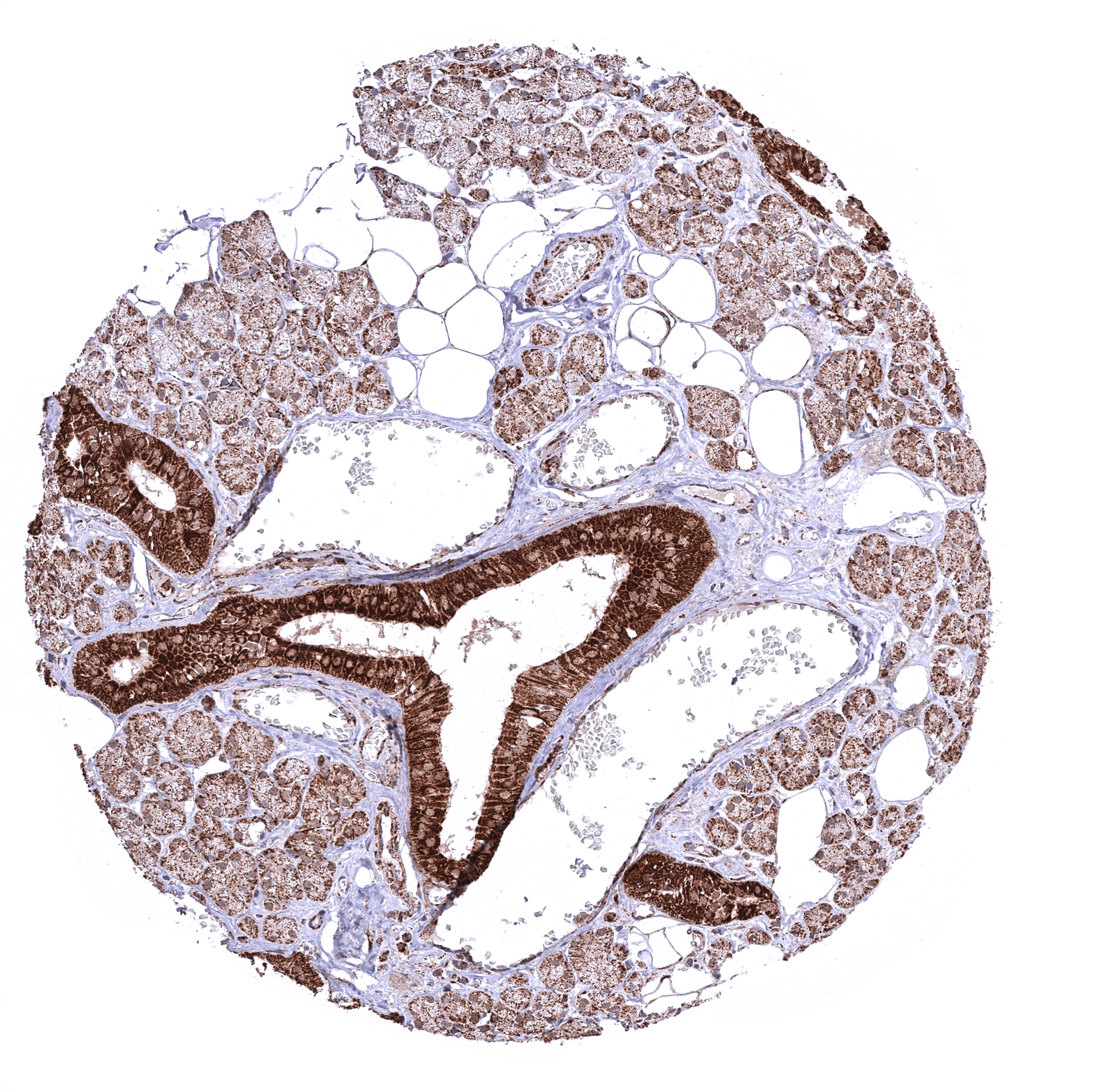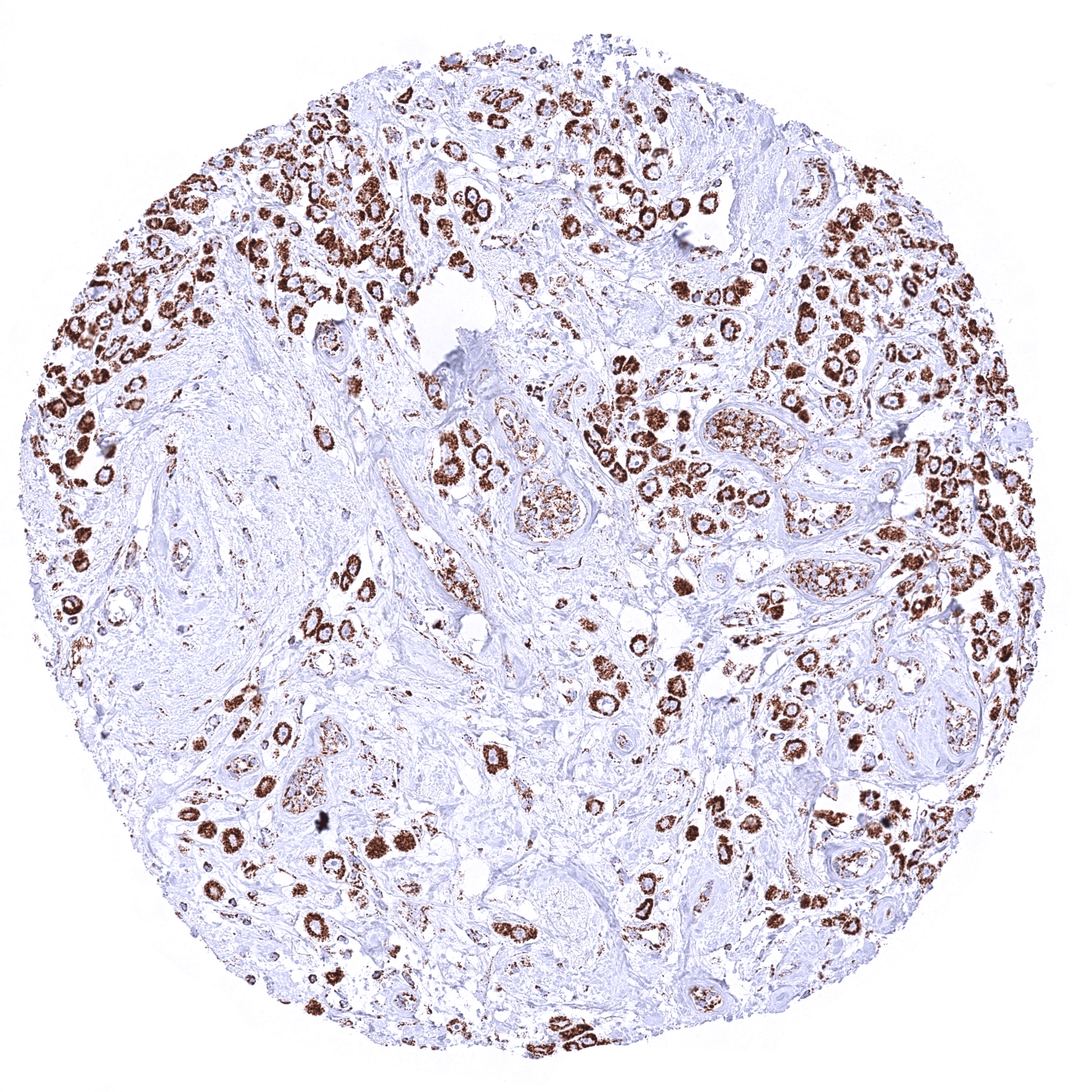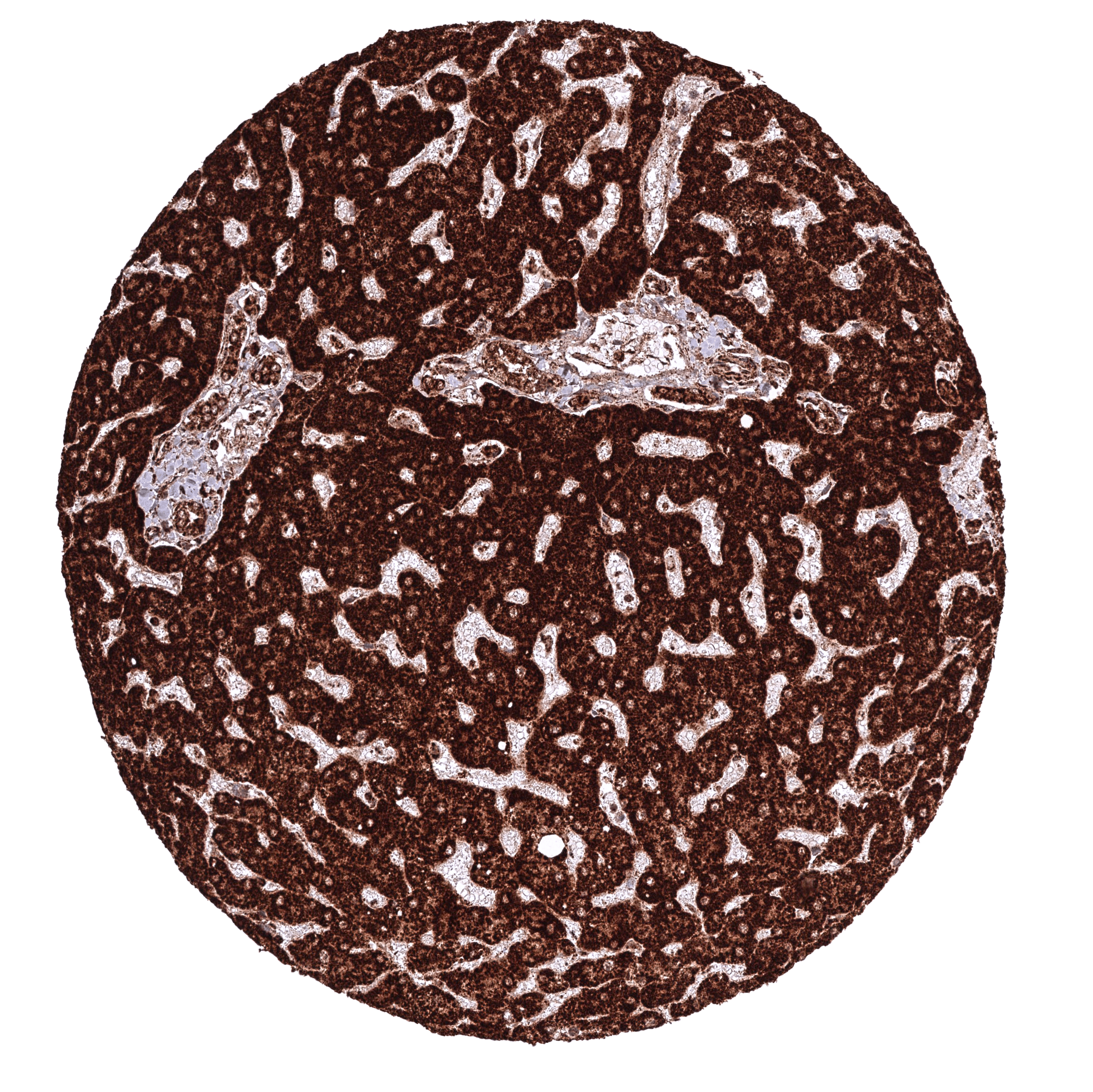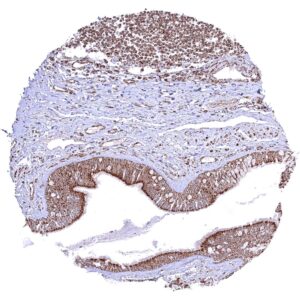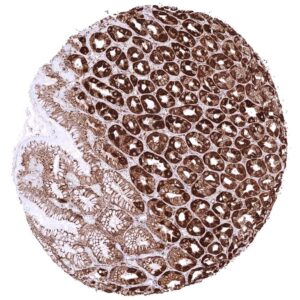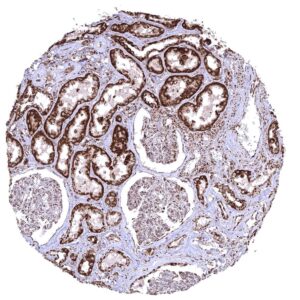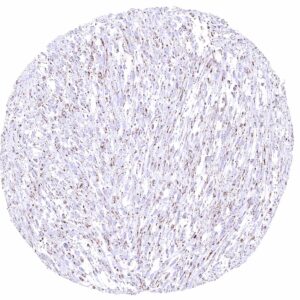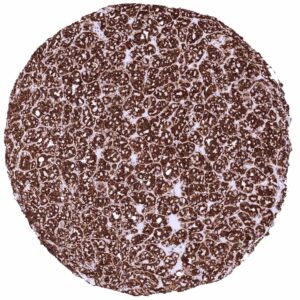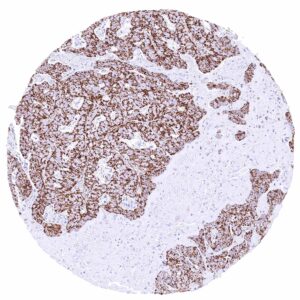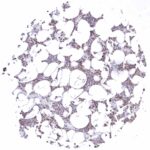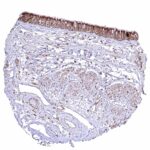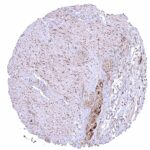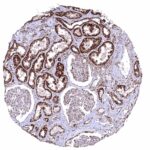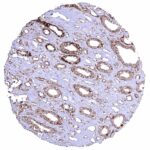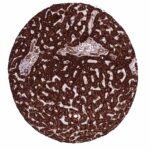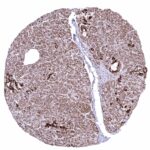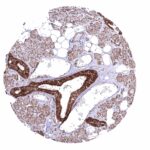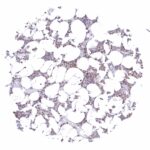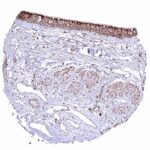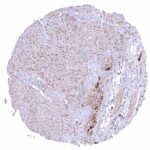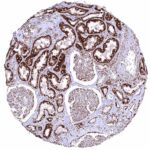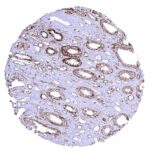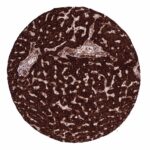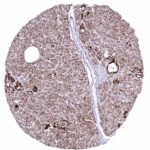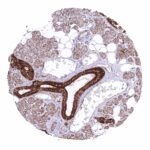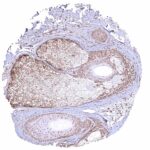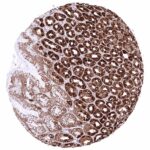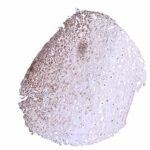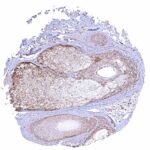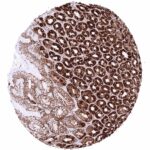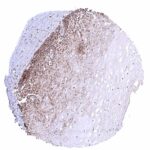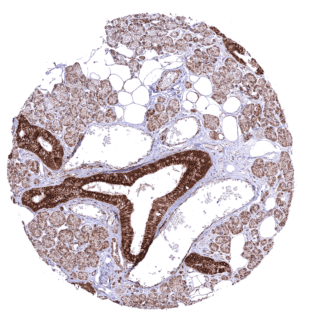295,00 € – 995,00 €
Product details
Synonyms = ATP synthase peripheral stalk subunit F6 , ATP5 , ATP5A , ATP5J , ATPM , CF6 , F6
Antibody type = Recombinant Rabbit monoclonal / IgG
Clone = HMV3971
Positive control = Parotis: A strong ATP5J staining should be seen in excretory ducts while staining is only weak to moderate in serous glands
Negative control = Parotis: ATP5J staining should be only weak to moderate in serous glands while staining is strong in excretory ducts (Note: completely ATP5J negative normal tissues do not exist)
Cellular localization = Mitochondrion,Mitochondrion inner membrane
Reactivity = Human
Application = Immunohistochemistry
Dilution = 1:100 – 1:200
Intended Use = Research Use Only
Relevance of Antibody
ATP5J is a component of ATPase. Critical mitochondrial protein.
Biology Behind
ATP synthase-coupling factor 6, mitochondrial (ATP5J) also termed ATP synthase peripheral stalk subunit F6 or ATP5PF is coded by the ATP5PF gene located at chromosome 21q21.3. It is a component of the enzyme ATP synthase which is needed to produce the energy storage molecule adenosine triphosphate (ATP) from adenosine diphosphate and phosphate. ATP5J is part of the peripheral stalk that links the two ATP synthetase subunits (F1 and FO) together. It has been proposed that its main function is structural as it holds the peripheral stalk stationary against the torque of the rotating central stalk (16045926). A direct functional role of ATP5J in cell proliferation, migration, and inflammation has also been suggested.
Staining Pattern in Normal Tissues
ATP5J is ubiquitously expressed. Images describing the ATP5J staining pattern in normal tissues obtained by the antibody HMV3971 are shown in our “Normal Tissue Gallery”.
| Brain | Cerebrum | Distinct cytoplasmic ATP5J staining of all cell types. |
| Cerebellum | Distinct cytoplasmic ATP5J staining of all cell types. | |
| Endocrine Tissues | Thyroid | Moderate to strong cytoplasmic ATP5J staining of all cell types. |
| Parathyroid | Distinct cytoplasmic ATP5J staining of all cell types. | |
| Adrenal gland | Cytoplasmic ATP5J staining occurs in all cell types. It is particularly strong in adrenocortical cells | |
| Pituitary gland | Distinct ATP5J staining of pituicytes, strong staining of all epithelial cells of the adenohypophysis.. | |
| Respiratory system | Respiratory epithelium | Cytoplasmic ATP5J staining occurs in all cell types. A characteristic granular cytoplasmic staining is seen below the apical membranes. |
| Lung | ATP5J staining is intense in alveolar macrophages but low in pneumocytes. | |
| Gastrointestinal Tract | Salivary glands | Cytoplasmic ATP5J staining occurs in all cell types. It is very intense in excretory ducts and least intense in glandular cells. |
| Esophagus | Distinct granular, perinuclear, cytoplasmic ATP5J staining in all cell types. The staining is least intense in superficial cell layers of non-keratinizing squamous epithelium. | |
| Stomach | Cytoplasmic ATP5J staining occurs in all cell types. It is most intense in parietal cells and least intense in superficial epithelial cells. | |
| Duodenum | Distinct cytoplasmic ATP5J staining of all cell types. | |
| Small intestine | Distinct cytoplasmic ATP5J staining of all cell types. | |
| Appendix | Distinct cytoplasmic ATP5J staining of all cell types. | |
| Colon | Distinct cytoplasmic ATP5J staining of all cell types. | |
| Rectum | Distinct cytoplasmic ATP5J staining of all cell types. | |
| Liver | Cytoplasmic ATP5J staining is particularly intense in hepatocytes. | |
| Gallbladder | Distinct cytoplasmic ATP5J staining of all cell types. | |
| Pancreas | Distinct granular, perinuclear, cytoplasmic ATP5J staining in all cell types. Some cells with higher staining intensity may be related to the excretory system. | |
| Genitourinary | Kidney | Cytoplasmic ATP5J staining occurs in all cell types. It is intense in all tubuli, moderate in collecting ducts, and least intense in glomeruli. |
| Urothelium | Distinct cytoplasmic ATP5J staining of all cell layers. | |
| Male genital | Prostate | Distinct cytoplasmic ATP5J staining of all cell types. |
| Seminal vesicles | Intense staining of epithelial cells. | |
| Testis | Distinct cytoplasmic ATP5J staining of all cell types. | |
| Epididymis | Distinct cytoplasmic ATP5J staining of all cell types. | |
| Female genital | Breast | Distinct cytoplasmic ATP5J staining of all cell types. |
| Uterus, myometrium | Distinct cytoplasmic ATP5J staining. | |
| Uterus, ectocervix | Distinct granular, perinuclear, cytoplasmic ATP5J staining in all cell types. The staining is least intense in superficial cell layers of non-keratinizing squamous epithelium. | |
| Uterus endocervix | Distinct cytoplasmic ATP5J staining of all cell types. | |
| Uterus, endometrium | Distinct cytoplasmic ATP5J staining of all cell types. | |
| Fallopian Tube | Distinct cytoplasmic ATP5J staining of all cell types. | |
| Ovary | Distinct cytoplasmic ATP5J staining of all cell types. Staining is particularly strong in the corpus luteum. | |
| Placenta early | Distinct cytoplasmic ATP5J staining of all cell types. | |
| Placenta mature | Distinct cytoplasmic ATP5J staining of all cell types. | |
| Amnion | Distinct cytoplasmic ATP5J staining. | |
| Chorion | Distinct cytoplasmic ATP5J staining. | |
| Skin | Epidermis | Distinct cytoplasmic ATP5J staining of all cell types. |
| Sebaceous glands | Distinct cytoplasmic ATP5J staining of all cell types of skin and hair follicles but staining is particularly weak in sebaceous glandular cells. | |
| Muscle/connective tissue | Heart muscle | Distinct cytoplasmic ATP5J staining. |
| Skeletal muscle | Distinct cytoplasmic ATP5J staining. | |
| Smooth muscle | Distinct cytoplasmic ATP5J staining. | |
| Vessel walls | Distinct cytoplasmic ATP5J staining. | |
| Fat | Weak cytoplasmic ATP5J staining. | |
| Stroma | Variable cytoplasmic ATP5J staining of different cell types. | |
| Endothelium | Distinct cytoplasmic ATP5J staining. | |
| Bone marrow/ lymphoid tissue | Bone marrow | Cytoplasmic ATP5J staining of variable intensity in all cell types. |
| Lymph node | Strong cytoplasmic ATP5J staining of all cell types. | |
| Spleen | Distinct cytoplasmic ATP5J staining of all cell types. | |
| Thymus | Distinct cytoplasmic ATP5J staining of all cell types. | |
| Tonsil | Strong granular cytoplasmic ATP5J staining of all cell types. The staining is least intense in superficial cell layers of squamous epithelium. | |
| Remarks | ATP5J is expressed in all cell types of the human body. At the selected staining conditions, staining is usually strong but few cell types show reduced expression. |
The findings described above are thus consistent with the RNA data described in the Human Protein Atlas (Tissue expression ATP5J).
Positive control = Parotis: A strong ATP5J staining should be seen in excretory ducts while staining is only weak to moderate in serous glands
Negative control = Parotis: ATP5J staining should be only weak to moderate in serous glands while staining is strong in excretory ducts (Note: completely ATP5J negative normal tissues do not exist)
Staining Pattern in Relevant Tumor Types
ATP5J expression has been described to occur in cancers of all types.
The TCGA findings on ATP5J RNA expression in different tumor categories have been summarized in the Human Protein Atlas.
Compatibility of Antibodies
No data available at the moment
Protocol Recommendations
IHC users have different preferences on how the stains should look like. Some prefer high staining intensity of the target stain and even accept some background. Others favor absolute specificity and lighter target stains. Factors that invariably lead to more intense staining include higher concentration of the antibody and visualization tools, longer incubation time, higher temperature during incubation, higher temperature and longer duration of the heat induced epitope retrieval (slide pretreatment). The impact of the pH during slide pretreatment has variable effects and depends on the antibody and the target protein.
All images and data shown here and in our image galleries are obtained by the manual protocol described below. Other protocols resulting in equivalent staining are described as well.
Manual protocol
Freshly cut sections should be used (less than 10 days between cutting and staining). Heat-induced antigen retrieval for 5 minutes in an autoclave at 121°C in pH 7,8 Target Retrieval Solution buffer. Apply HMV3971 at a dilution of 1:150 at 37°C for 60 minutes. Visualization of bound antibody by the EnVision Kit (Dako, Agilent) according to the manufacturer’s directions.
Potential Research Applications
- The role of ATPJ5 in disease is not fully understood
- The utility of ATP5J as a biomarker is not clear
- The utility of ATP5J measurement in cancer needs to be evaluated (it could be useful as a surrogate for the quantity of mitochondria or ATPase activity)
Evidence for Antibody Specificity in IHC
There are two ways how the specificity of antibodies can be documented for immunohistochemistry on formalin fixed tissues. These are: 1. Comparison with a second independent method for target expression measurement across a large number of different tissue types (orthogonal strategy), and 2. Comparison with one or several independent antibodies for the same target and showing that all positive staining results are also seen with other antibodies for the same target (independent antibody strategy).
Orthogonal validation: For the antibody HMV3971 specificity is in line with data from three independent RNA screening studies, including the Human Protein Atlas (HPA) RNA-seq tissue dataset, the FANTOM5 project, and the Genotype-Tissue Expression (GTEx) project, which are all summarized in the Human Protein Atlas (Tissue expression ATP5J). In agreement with HMV3971 immunostaining data, high ATP5J RNA expression occurs in all normal tissues. However, it must be understood that orthogonal validation is not optimal for assessing ubiquitously expressed protein.
Comparison of antibodies: True expression of ATP5J in cell types with documented ATP5J immunostaining by HMV3971 is validated by an identical staining pattern obtained by a second, independent commercially available ATP5J antibody, termed “validation antibody” for virtually all normal tissues.

